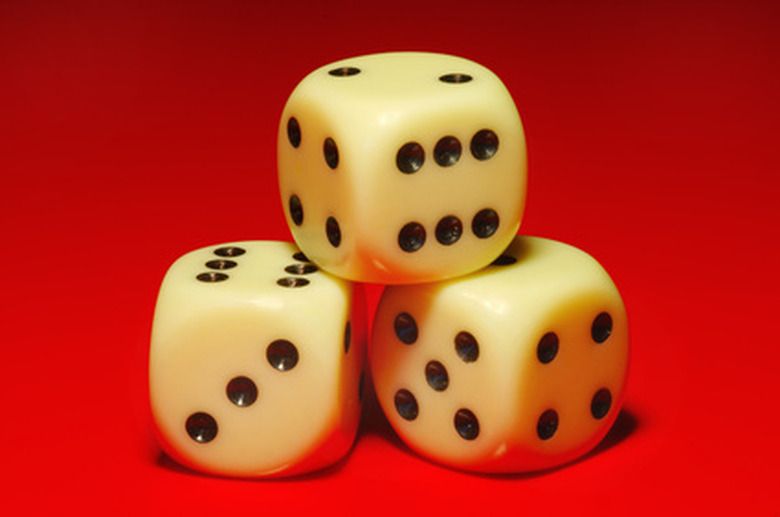Dice Games To Teach Multiplication Facts
Capturing and holding the attention of students can be challenging in any content area, and math is definitely one of those areas. By using games in math, the interest of the student will be held, and while the student is playing the game, he is learning. Using dice to teach multiplication facts provides an excellent opportunity for the students to learn multiplication through a game. Once the game is learned at school, the students can play the game at home with siblings or parents and the only items needed are inexpensive dice.
Single Digit Multiplication
Single Digit Multiplication
Students roll one die to see who goes first. The student who rolls the highest number goes first. The student rolls two dice and multiplies the numbers. That student writes down the problem and the answer. The partner checks the problem. If the answer is correct, the student who rolled the dice receives a tally mark. The students then switch roles. The first student to the predetermined amount of tally marks is the winner.
Double Digit Multiplication
Double Digit Multiplication
Students role two dice to see who goes first. The numbers on the dice are multiplied and the highest answer goes first. Counters are used to determine the winner. Counters can be pennies, beans or other small objects. To add more excitement, use small pieces of candy as counters. The first student roles three dice one at a time. The first two dice are the "to" number for the multiplication problem. For example, if a three and a two are rolled, the number will be 32. The third dice is rolled to provide the single digit number to multiply the double digit number by. The student solves the problem on paper and another student checks her work. If the student is correct, a counter is given to that student. If the student is not correct, a counter is given to the other student. The student with the most counters after a preset time or number of problems is the winner.
War With Dice
War With Dice
Students are given the same number of counters such as beans, pennies or small pieces of candy and two dice. Each student places a counter in the middle of the playing surface. Students roll their dice and multiply the numbers on each of their own dice together. The students each say the problem and the answer. The student with the highest answer takes both counters from the middle. The process is repeated until one student does not have any counters left. The student with all the counters is the winner.
Cite This Article
MLA
Randash, LynDel. "Dice Games To Teach Multiplication Facts" sciencing.com, https://www.sciencing.com/dice-games-teach-multiplication-6372085/. 24 April 2017.
APA
Randash, LynDel. (2017, April 24). Dice Games To Teach Multiplication Facts. sciencing.com. Retrieved from https://www.sciencing.com/dice-games-teach-multiplication-6372085/
Chicago
Randash, LynDel. Dice Games To Teach Multiplication Facts last modified March 24, 2022. https://www.sciencing.com/dice-games-teach-multiplication-6372085/
